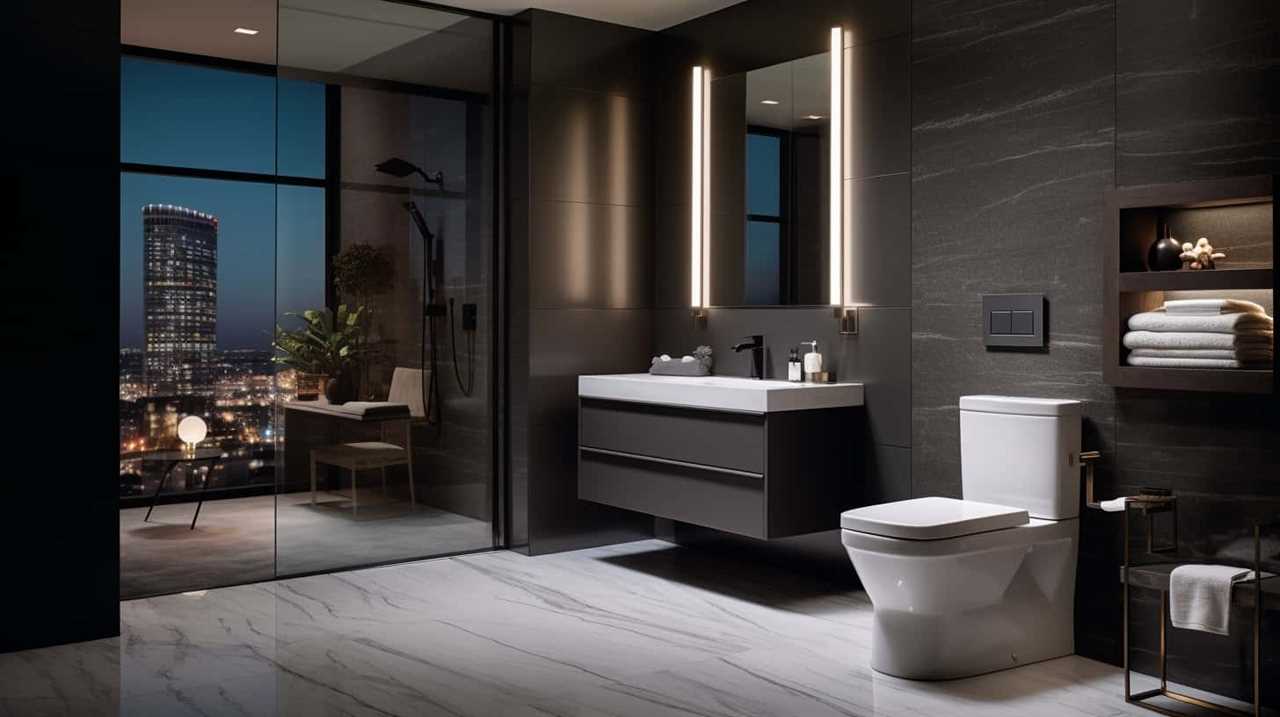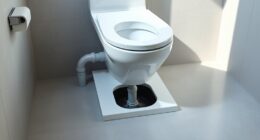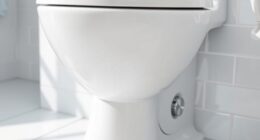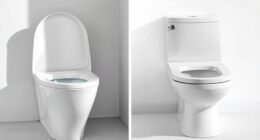Are you interested in learning about the electricity usage of bathroom fans? Allow us to provide some insight on the topic.
In this article, we will delve into the inner workings of bathroom fans and explore the factors that influence their energy usage.
We will also provide tips on reducing electricity consumption and guide you in choosing an energy-efficient fan.
Get ready to master the art of optimizing your bathroom fan’s efficiency!

Key Takeaways
- A bathroom fan draws in air from the bathroom and expels it outside through a ventilation system, helping to maintain good air quality and prevent the growth of mold and mildew.
- The electricity consumption of a bathroom fan is determined by its power rating and operating time, and energy efficiency can vary among different fans.
- Factors that influence the energy usage of a bathroom fan include its design, usage patterns, power efficiency, and regular maintenance.
- To reduce electricity usage, it is recommended to replace old fans with energy-efficient models, optimize usage by using the fan only when necessary, explore alternative ventilation methods, and turn off the fan when leaving the bathroom.
How Does a Bathroom Fan Work
The bathroom fan works by drawing in air from the bathroom and expelling it outside through a ventilation system. This process is essential for maintaining good air quality and preventing the growth of mold and mildew.
When installed correctly, a bathroom fan can effectively remove excess moisture and odors from the air, improving the overall comfort of the bathroom. The installation of a bathroom fan involves cutting a hole in the ceiling or wall and connecting the fan to a duct that leads outside.
It’s important to ensure that the fan is properly sized for the bathroom and that the ductwork is correctly installed to maximize its efficiency. The benefits of a bathroom fan include reducing humidity levels, preventing damage to walls and ceilings, and improving overall air quality.
Understanding the Electricity Consumption of a Bathroom Fan
We use a bathroom fan every day, but have you ever wondered how much electricity it actually consumes? Understanding the electricity consumption of a bathroom fan is crucial for calculating the cost of running it and dispelling common misconceptions about its electricity usage.

Here are three key points to consider:
- Power rating: The electricity consumption of a bathroom fan depends on its power rating, which is typically measured in watts. Higher power ratings indicate higher energy consumption.
- Operating time: The amount of electricity used by a bathroom fan also depends on how long it’s operated. The longer the fan runs, the more electricity it consumes.
- Energy efficiency: Some bathroom fans are designed to be more energy-efficient than others. Look for fans with energy star ratings or low energy consumption labels to minimize electricity usage.
Factors That Influence the Energy Usage of a Bathroom Fan
Factors influencing the energy usage of a bathroom fan include its design, usage patterns, and power efficiency.
The design of the fan plays a significant role in its energy consumption. Fans with larger blades or higher operating speeds tend to use more electricity.
Additionally, the frequency and duration of use can greatly impact energy usage. Fans that are used for longer periods or more frequently will consume more energy.

Power efficiency is another crucial factor. Fans with higher energy efficiency ratings are designed to use less electricity while still maintaining effective ventilation.
Regular maintenance, such as cleaning the fan blades and ensuring proper airflow, can also contribute to energy savings.
Tips for Reducing Electricity Usage of a Bathroom Fan
To reduce the electricity usage of a bathroom fan, we can consider implementing various strategies. Here are three tips for reducing the electricity usage of a bathroom fan:
- Replace the old fan: Consider replacing your outdated bathroom fan with a newer, more energy-efficient model. Look for fans that are ENERGY STAR certified, as they’re designed to consume less electricity while maintaining optimal performance.
- Optimize usage: Use the fan only when necessary. Turn it on during and after showering to remove excess moisture and prevent mold growth. Remember to turn it off when you leave the bathroom to avoid unnecessary energy consumption.
- Explore alternative ventilation methods: In addition to using a bathroom fan, you can also consider alternative ventilation methods such as opening a window or using a dehumidifier. These options can help reduce the reliance on the fan and save electricity.
Choosing an Energy-Efficient Bathroom Fan
When it comes to reducing electricity usage, one important factor to consider is the choice of an energy-efficient bathroom fan.
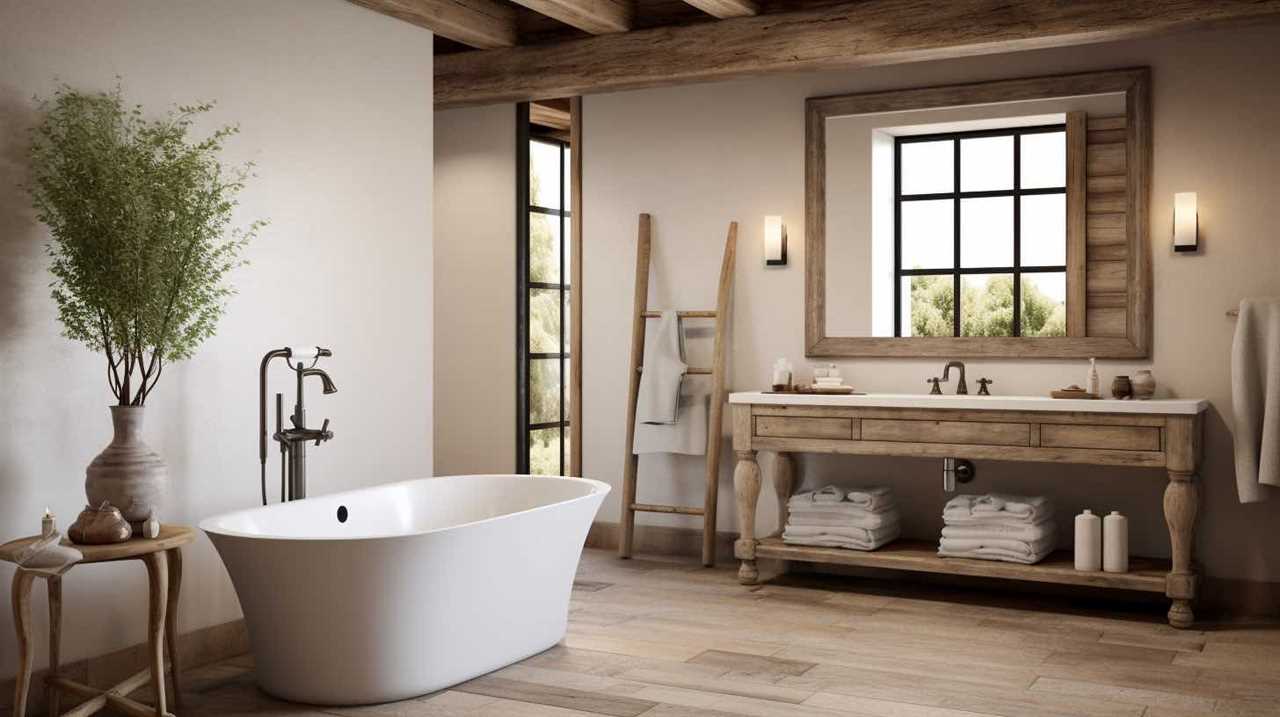
Energy-saving features and noise reduction techniques are key considerations when looking for a bathroom fan that’s both efficient and effective. Energy-saving features can include options such as a low-power motor or a timer that automatically turns off the fan after a certain period of time. These features help to minimize energy consumption and reduce electricity costs.
Additionally, noise reduction techniques, such as insulated housing or improved blade design, can ensure a quieter operation without compromising on performance.
Frequently Asked Questions
Can a Bathroom Fan Be Operated Without Using Electricity?
Yes, a bathroom fan can be operated without using electricity. There are eco-friendly alternatives and natural ventilation options available that don’t require electricity for proper airflow and ventilation.
What Are the Different Types of Bathroom Fans Available in the Market?
Different types of bathroom fans include exhaust fans, ventilation fans, and combination fans. Each type has its own set of features, such as humidity sensors, timers, and motion detectors. Pros and cons depend on specific needs and preferences.
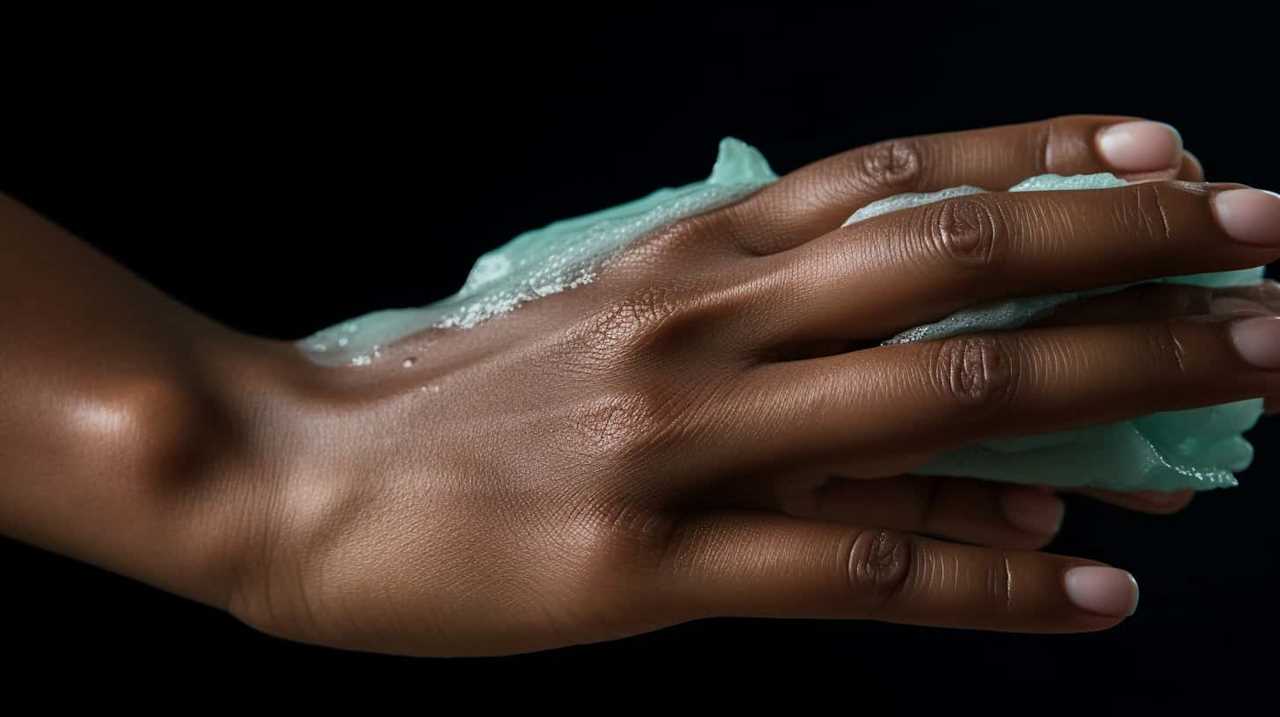
Is It Safe to Leave a Bathroom Fan Running for Extended Periods of Time?
Is it safe to leave a bathroom fan running for extended periods? We analyzed safety concerns and energy consumption. While a bathroom fan does use electricity, it is generally safe to leave it running as long as it is well-maintained.
Are There Any Regulations or Guidelines Regarding the Energy Efficiency of Bathroom Fans?
Energy efficiency regulations and guidelines exist for various appliances, including bathroom fans. These regulations aim to maximize energy saving potential and reduce electricity consumption. Compliance with these guidelines ensures optimal performance and reduced environmental impact.
Can a Bathroom Fan Contribute to Energy Savings in the Overall Household?
A bathroom fan can contribute to energy savings in the overall household by reducing energy consumption and providing ventilation benefits. It efficiently removes moisture and odors, improving air quality and reducing the need for additional cooling or heating.
Conclusion
In conclusion, a bathroom fan does use electricity. However, by understanding how it works and considering factors that influence its energy usage, we can take steps to reduce electricity consumption.

Choosing an energy-efficient bathroom fan is key to minimizing power usage. Despite initial costs, investing in an energy-efficient fan can lead to long-term savings and a more sustainable bathroom environment.
So, let’s make a smart choice and save both energy and money.






